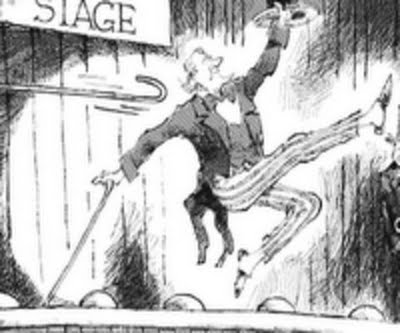Eighteen states provide for recall elections to remove state officials. Nine of those provide for the same for their Congressional representatives. But such a right of recall can and should be adopted in every state.

Ideally this would be done by amending the state constitution to provide for such recall elections. But it can be done through statute as well, with the New Jersey Uniform Recall Election Law as a good model.
The greatest opportunity is in the states that already provide for citizen initiatives to put state constitutional amendments or proposed statutes on the state ballot for a vote of the people for adoption. In these states, the citizens can act directly, without depending on the politicians to adopt a check on their own power.
The right of recall is desirable because it maintains democratic accountability to the people throughout the entire term of elected officials, rather than just at election time. This is more relevant now because increasingly we see an attitude among elected officials that they know best and the people are ignorant yahoos who should be ignored until they need to be fooled again at election time. The people need a right of recall to remove officials who display this anti-democratic attitude after they are elected.
We have seen this problem in particular in the health care battle, where Congressional representatives have displayed the attitude that the people are too gullible, confused and misled to understand the issue, and should be ignored by the wise elected officials who know better. Elected officials have responded to citizens voicing their objections with name calling, labeling them Nazis, racists, and tea baggers. These officials are still threatening to adopt a thorough government takeover of health care on the idea that the people will never be able to unscramble the mess. The right of recall is needed to shortcircuit this tactic.
Another increasing problem is candidates who campaign as conservatives to get elected, and then once they get in office they join with the far left to pass their agenda instead. With the right of recall, voters who feel they were snookered in this way can act to remove their representative once this pattern becomes apparent. With this power in place, candidates would be less likely to try to get elected on false pretenses in the first place.
The right of recall would also counter the growing problem of voter fraud. If voters feel there were too many shenanigans in a vote count, and don’t trust the result, they can act to provide for a new election. A perfect example is the recent extended vote count for Sen. Al Franken in Minnesota, which was based on a developed art form of focusing the recount on districts that heavily favor one party, where votes can be manufactured. With this success, rest assured that this will be tried again and again.
A recent example of recall in action was the 2003 removal of then recently reelected California Gov. Davis. The people voted overwhelmingly to remove him from office in a recall election, and replaced him with current Governor Arnold Schwarzenegger. This example shows that the recall process is practical and not counterproductively disruptive.
But anyone who wants to pursue such a recall, or the process of initiative to adopt recall for their state, should realize from the start that this is a time consuming process requiring the collection of likely millions of signatures on petitions, all in strict compliance with the letter of the law. You can bet that opponents will be looking for any legal variance to deny the whole effort. Therefore, the effort needs to be organized from the beginning with sufficient resources and experienced input to be successful.
COMMENTS
Please let us know if you're having issues with commenting.